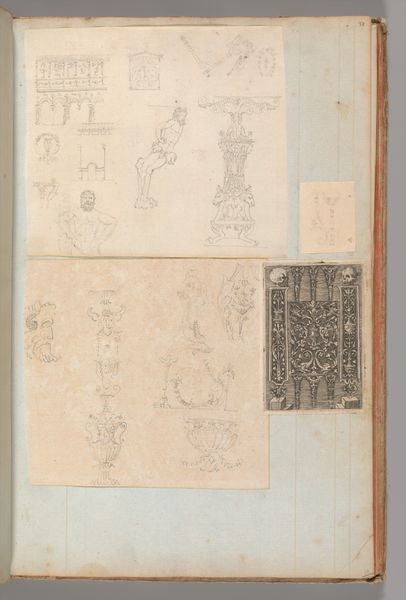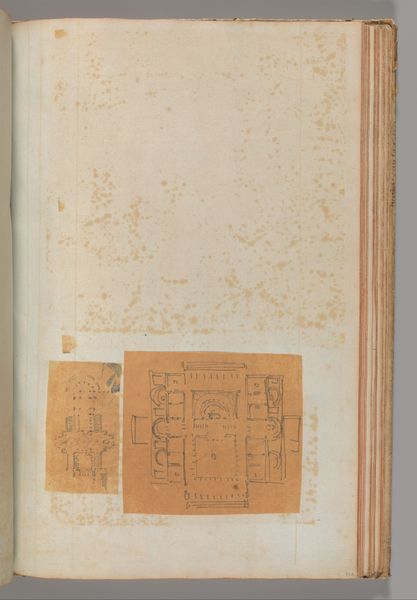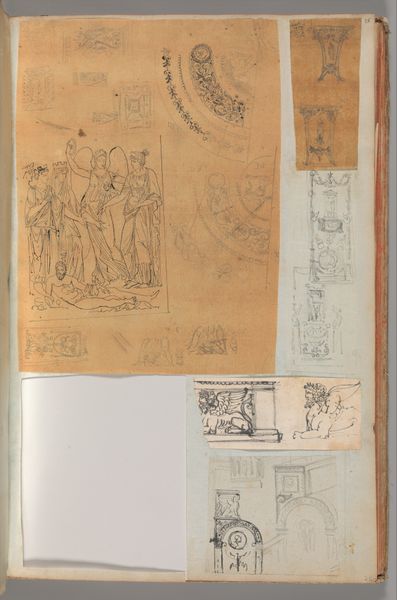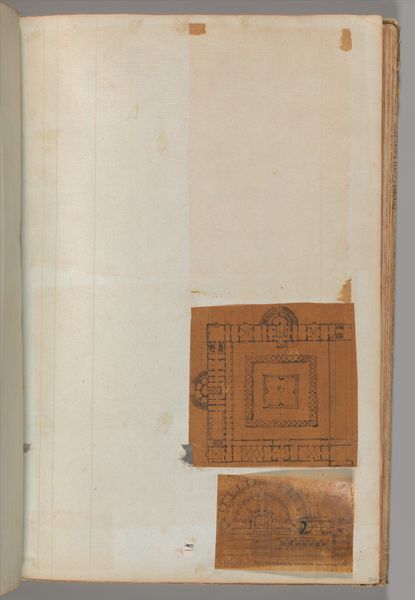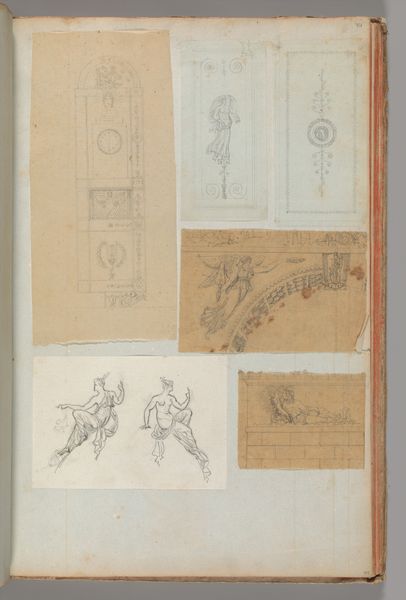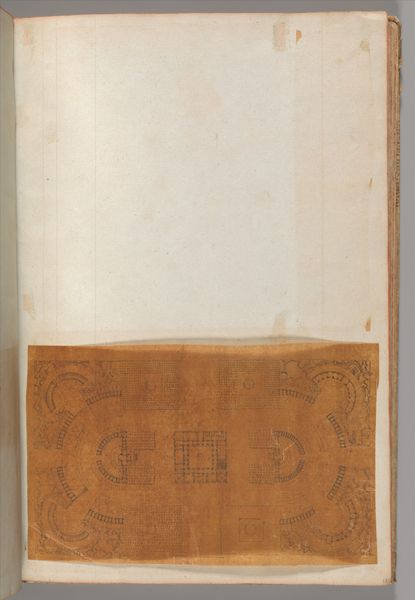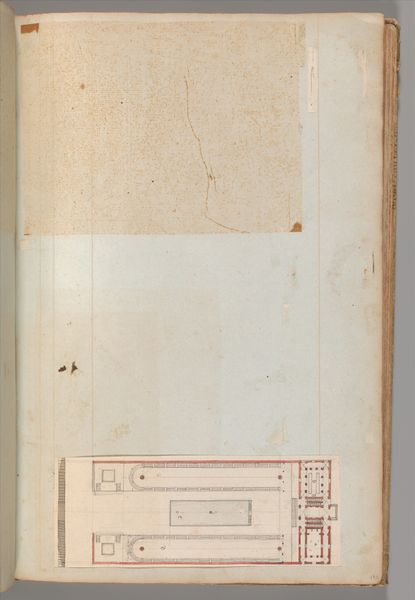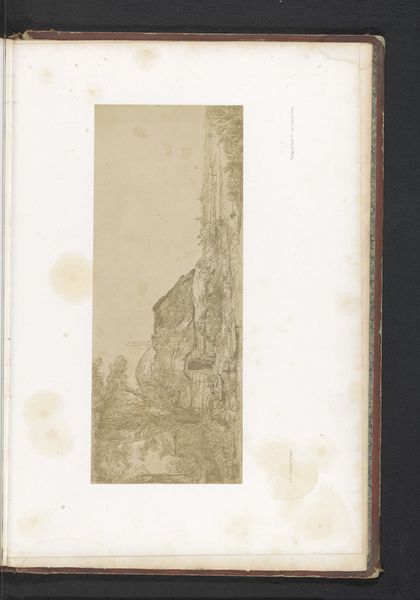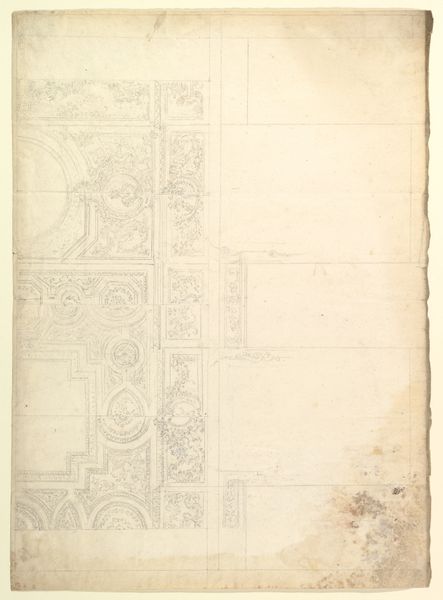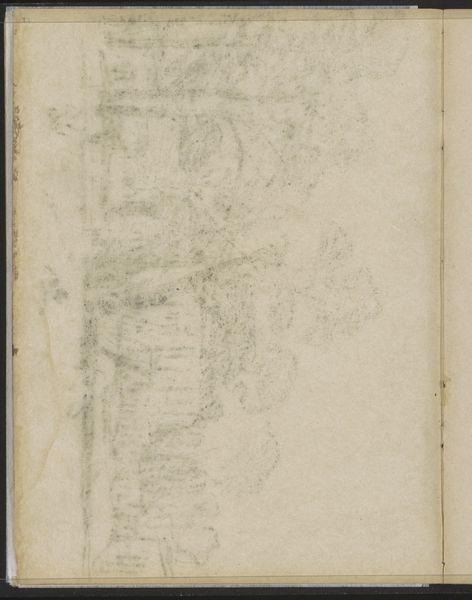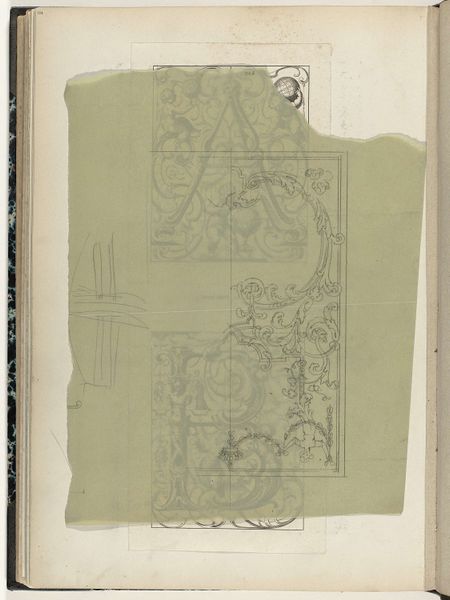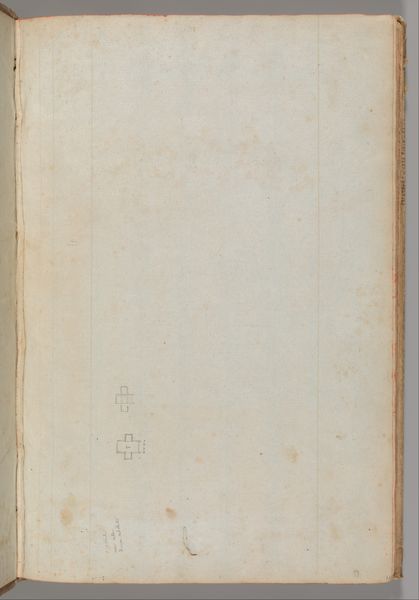
Page from a Scrapbook containing Drawings and Several Prints of Architecture, Interiors, Furniture and Other Objects 1795 - 1805
0:00
0:00
drawing, print, paper, pencil
#
drawing
#
neoclacissism
# print
#
paper
#
coloured pencil
#
pencil
#
history-painting
#
miniature
Dimensions: 15 11/16 x 10 in. (39.8 x 25.4 cm)
Copyright: Public Domain
Curator: This is a page from a scrapbook, holding drawings and prints dating from around 1795 to 1805 by Charles Percier, an influential figure in the French Neoclassical movement. The sheet is a mix of pencil, colored pencil, and printed images, all on paper. Editor: There's an almost ethereal quality to the draftsmanship. It feels provisional, like glimpsing into an architect’s thought process where grand ideas take fragile, tentative form on the page. Curator: Percier's scrapbooks were intensely private spaces for the development of designs, and crucial to understanding his workshop practices. They showcase a range of sources he drew upon and often recombined in novel ways for both interiors and buildings. Editor: Exactly! The emphasis here is on documentation of ornament, light and portable for consultation. This sheet’s combination of griffin pillar motifs, fountain and interior decoration sketches points to a fascination with manipulating symbolic forms across different types of decorative elements. Curator: It's fascinating to consider how Percier’s studio systematized design elements; his use of antiquity was both academic and deeply inventive, informing the look of the Napoleonic Empire, for instance. Editor: I think also about the labor inherent in printmaking. These images probably acted like a collective resource of visual ideas for multiple hands to work with and to extract patterns from when creating designs across textiles or building exteriors. Curator: True, Percier effectively streamlined Neoclassical aesthetic and deployed it for propagandistic and social functions under Napoleon. That his scrapbook reveals that the production relied upon collected patterns also shows us the human scale of monumental design. Editor: Absolutely. Percier shows a democratizing aspect through reproducible components. Curator: Looking closely at Percier’s working practices illuminates the artistic decisions shaping the decorative programs that reinforced Empire ambitions. Editor: And for me it showcases artistic lineage built upon layers and fragments that transform across different physical domains of architecture. It also presents a rich catalogue of the way craft enabled neoclassicism in visual culture.
Comments
No comments
Be the first to comment and join the conversation on the ultimate creative platform.
